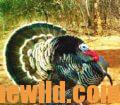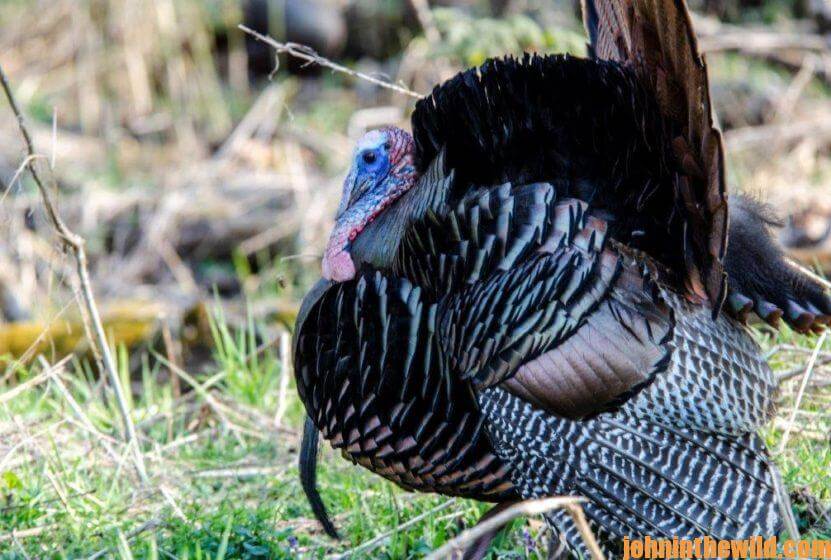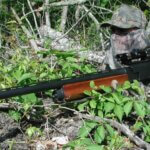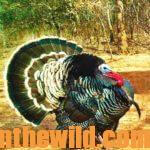Editor’s Note: Today, 34-year-old Ryan Solomon of Aguilar, Colorado, spends a portion of turkey season each year in Colorado guiding for western turkeys for Fulldraw Outfitters (https://www.fulldrawoutfitters.com/). However, he’s spent most of his life in Georgia on his family’s 9,500-acre Gopher Plantation (http://www.gopherplantation.com/) guiding for eastern wild turkeys. We’ve asked Solomon to tell us the difference in calling Merriam’s and Rio Grande gobblers in the West and eastern gobblers.
 The calls I use most often are a wide variety of diaphragm calls and some custom-made slate calls. The call I hardly ever use, but always have with me, is a box call. On bad, windy days, when I just need to get a call out a long way, I’ll use a box call and call really loudly on it. I think the single biggest mistake that hunters, who call elk or turkeys, come to the West and make is they try and call too loudly. Once I get a gobbler to answer my call, I turn the volume back on my calling and start using soft yelps, soft clucks and soft purrs.
The calls I use most often are a wide variety of diaphragm calls and some custom-made slate calls. The call I hardly ever use, but always have with me, is a box call. On bad, windy days, when I just need to get a call out a long way, I’ll use a box call and call really loudly on it. I think the single biggest mistake that hunters, who call elk or turkeys, come to the West and make is they try and call too loudly. Once I get a gobbler to answer my call, I turn the volume back on my calling and start using soft yelps, soft clucks and soft purrs.
 Now besides using those soft calls, I’ll often take my hand and scratch in the leaves if I know I’m far enough away from the turkey, so he can’t see my movement. I want to give the sounds that turkeys make as they move through the woods or feed through the woods, and not just the sounds that they use to communicate with other turkeys. Whether you’re calling elk or turkeys, one thing that’ll make those critters hang-up and not come within bow or gun range is when they get close to where they know they should be able to see a cow elk or a hen turkey and can’t see those females. Generally, they’ll stand where they are until the females show themselves. However,
Now besides using those soft calls, I’ll often take my hand and scratch in the leaves if I know I’m far enough away from the turkey, so he can’t see my movement. I want to give the sounds that turkeys make as they move through the woods or feed through the woods, and not just the sounds that they use to communicate with other turkeys. Whether you’re calling elk or turkeys, one thing that’ll make those critters hang-up and not come within bow or gun range is when they get close to where they know they should be able to see a cow elk or a hen turkey and can’t see those females. Generally, they’ll stand where they are until the females show themselves. However, 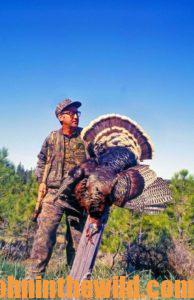 with turkeys, if you’re scratching in the leaves, that gobbler may say to himself, “That hen just must not see me. I hear her over there feeding. She should be talking to me or at least showing me where she is. So, I’ll move a little closer to let her see what a fine, proud bird I am.” That’s when the turkey’s ego causes his head to get full of lead.
with turkeys, if you’re scratching in the leaves, that gobbler may say to himself, “That hen just must not see me. I hear her over there feeding. She should be talking to me or at least showing me where she is. So, I’ll move a little closer to let her see what a fine, proud bird I am.” That’s when the turkey’s ego causes his head to get full of lead.
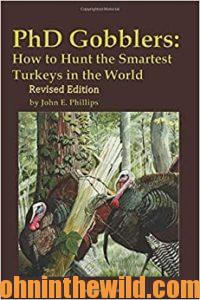 To learn more about turkey hunting, check out John E. Phillips’s latest Audible book, “PhD Gobblers: How to Hunt the Smartest Turkeys in the World, Revised Edition” at https://www.amazon.com/PhD-Gobblers-Smartest-Turkeys-World-ebook/dp/B083V83RLG, and available in Kindle, print and Audible. You may have to cut and paste this link into your browser. (When you click on this book, notice on the left where Amazon says you can read 10% of this book for free and hear 10% for free). To learn about other turkey books by John E. Phillips, go to www.amazon.com/author/johnephillips.
To learn more about turkey hunting, check out John E. Phillips’s latest Audible book, “PhD Gobblers: How to Hunt the Smartest Turkeys in the World, Revised Edition” at https://www.amazon.com/PhD-Gobblers-Smartest-Turkeys-World-ebook/dp/B083V83RLG, and available in Kindle, print and Audible. You may have to cut and paste this link into your browser. (When you click on this book, notice on the left where Amazon says you can read 10% of this book for free and hear 10% for free). To learn about other turkey books by John E. Phillips, go to www.amazon.com/author/johnephillips.
Tomorrow: Guide Ryan Solomon Throws His Turkey Calls

